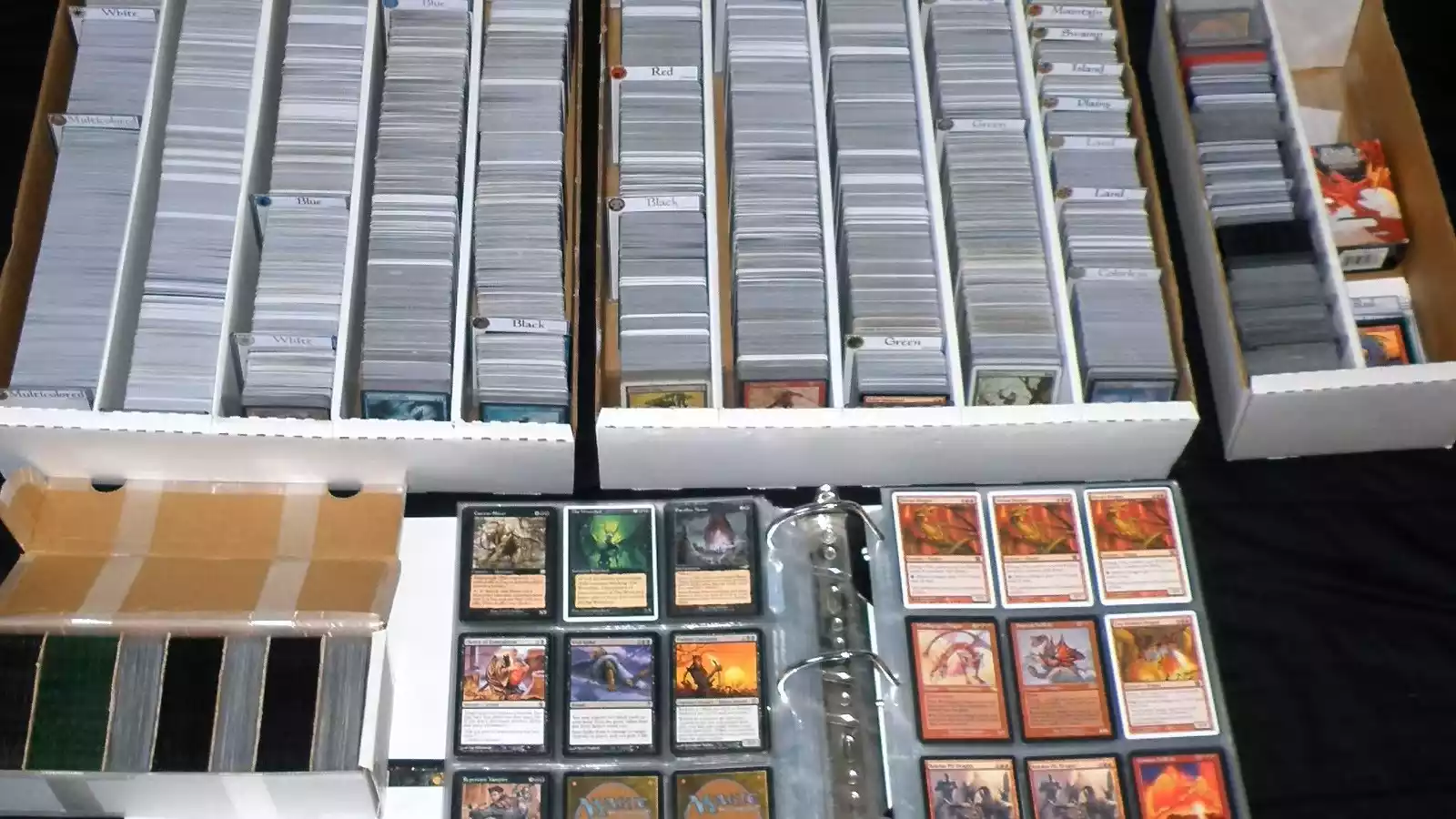
Magic: The Gathering can be overwhelming when you’ve got stacks of cards scattered everywhere. Sometimes you just want to find that one specific Commander staple, but it’s buried in a random pile under your bed. Organizing your MTG cards can save you time, money, and a lot of frustration. When you know exactly where things are, it’s easier to build decks, trade with friends, or just admire your collection. Below are some tips and tricks to help you sort your cards in a way that works for you.
Before you start, figure out what your main goal is. Do you want to find cards quickly for deck building? Do you care more about collecting specific sets or expansions? Your priority affects how you organize. For example, some people prefer sorting by color, while others like to sort by set or by format. There’s no one “best” way—just the way that feels logical to you.
You don’t need fancy tools, but certain items help:

Step One: Clear a Space
Make sure you have room to lay out your cards, whether that’s a desk, a table, or even the floor. You want to avoid knocking over small piles that will scatter everywhere. (I’ve been there—definitely not fun.)
Step Two: Start Broad
Begin with your largest categories. For instance, if you’re sorting by color, make six piles: White, Blue, Black, Red, Green, and Colorless/Multicolor. If you’re sorting by set, spread out your set dividers or labels: Innistrad, Theros, Dominaria, etc. You don’t have to be perfect at this stage. Just get the general piles going.
Step Three: Break It Down
Once you have those big piles, refine them. If you sorted by color, now split the white pile into smaller groups like creatures, enchantments, instants, or even by mana cost if that’s your preference. If you’re focusing on set organization, this is the moment to order them by card number, rarity, or even alphabetical order.
Step Four: Store Them Properly
Place your newly sorted piles into the boxes or binders. Use dividers to mark where one group ends and the next begins. Label everything. You might think you’ll remember, but a month later you’ll be staring at a box, wondering, “Wait, why did I separate these cards again?”
Regular Updates
Every time you crack a booster pack or pick up singles at your local game store, you add more cards to your collection. It’s best to file them right away while you still remember what they are. If you procrastinate, you’ll wind up with another messy pile that needs sorting.
Know When to Downsize
You might have thousands of bulk commons that you never use. If they’re taking up valuable space, consider donating them, selling them as bulk, or giving them to new players. Letting go of cards you don’t need makes your main collection easier to handle.
Protect Valuable Cards
If you stumble upon a pricey mythic or a foil you really like, sleeve it up or put it in a top loader. Keep an eye on the condition of these cards. Over time, you might want to re-sleeve them if the sleeves start looking scuffed or dirty.
Some people like to maintain an online inventory. This can be helpful if you buy, sell, or trade frequently. You can quickly check if you own a certain card, see how many copies you have, or get an estimate of your collection’s value. Apps and websites like Deckbox or TCGplayer inventory tools can speed up trades and prevent accidental purchases of cards you already own.
There’s no law saying you must keep all your commons in color order. You might decide to store your Commander cards by synergy or theme—like “zombie tribal” in one box, “artifact synergy” in another. It’s your collection. The key is clarity. If you can retrieve a card when you need it, then your system works. If you find yourself fumbling, it might be time to revise your approach.
If you have a truly huge collection—like tens of thousands of cards—you might need industrial-strength solutions. Think about shelving units for your boxes or special filing cabinets. I’ve seen people use library-like systems with every set labeled in giant boxes. It sounds extreme, but it’s surprisingly efficient if your collection is that large.
Organizing your Magic: The Gathering cards might feel like a chore, but it can actually be pretty satisfying. Once you find a system that works for you, it’s easier to build decks, evaluate trades, or just relax knowing where everything is. Start with broad categories, refine them, and store your cards in a way that keeps them safe. Update your collection often, protect your valuable cards, and don’t be afraid to change your system if you realize something else fits better. The main goal is to enjoy your cards, not waste time hunting for them. Good luck, and happy sorting!